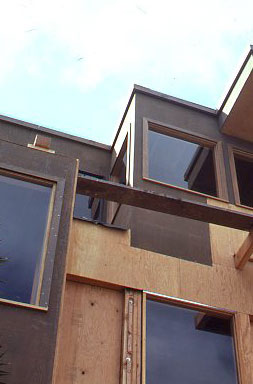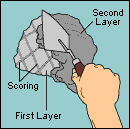Expert advice on how to repair and replace plywood and hardboard siding, including how to fill holes, remove stains and patch damaged areas.
The worst enemy of any wood-based siding is moisture. Here’s how to repair hardboard or plywood siding that has been compromised by the elements:
Repairing Hardboard Siding
If water seeps into joints between hardboard panels or penetrates through small holes, it will cause the panels to deteriorate. Immediately fill holes with a flexible, all- purpose filler such as pre-mixed bridging and patching compound, following label directions. Sand the area smooth, and then paint it to match the rest of the siding. For deep holes, build up the patch with several successive layers, allowing each to dry before applying the next.
Buckling is usually another sign of moisture. Any buckled or moisture-damaged hardboard siding must be replaced. Check your manufacturer’s warranty, or ask a lumberyard about consumer information on your type of siding.
To remove stains from hardboard siding, wash it with a mild detergent. Oil-based stains may require scrubbing with a solvent. If stains don’t come out this way, you may have to resort to sanding the area and refinishing it, but, before you go this route, be sure you can match the color of the existing finish.
Repairing Plywood Siding
When plywood’s surface veneer becomes weatherworn, it may crack, or “check,” and begin to peel.
Repair is easy, but the trick is to match the finish on the patched area. You will need paint or stain that is an exact match, so test your replacement finish somewhere on the siding where it will not show.
Sand down the cracked area and apply a flexible, all-purpose exterior vinyl spackling compound, using a putty knife. Smooth the patch before it hardens. Allow it to dry, lightly sand the patched area, and finish it to match your siding.
When the sandwich-like plies of plywood separate, it usually means that water has penetrated the material and compromised the glue. To remedy this, force waterproof carpenter’s glue into the area between plies, and then nail with galvanized common nails. Be sure the edges of the plywood are properly flashed with sheet metal or caulked to prevent moisture from getting back in. And be sure the plywood has a durable finish.
For plywood that has numerous delaminations or serious damage, replace the entire sheet.








 Don Vandervort writes or edits every article at HomeTips. Don has:
Don Vandervort writes or edits every article at HomeTips. Don has:




